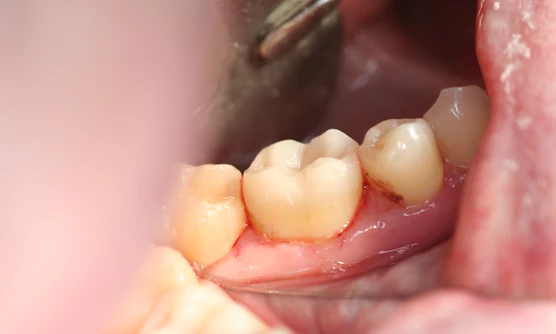The Truth About Crowns

Many patients approach me for a second opinion regarding a recommendation for a crown. Back in 2006, I made a commitment to myself to endeavour to eliminate conventional crowns from my practice. Why would I do this? Prior to this, I was like most dentists today – I would recommend conventional crowns regularly. Back in the 1990’s, the composite resin restoratives and associated adhesives began to deliver excellent outcomes, and not all of my patients could afford a crown, so I offered, what at the time I thought was the next best thing… a composite resin restoration. Over the coming decades, many of these patients returned to me and I could review my resin restorations. What I found was enlightening. Most of the “next best thing” resin restorations were doing fine.
Most of the crowns were also doing fine. However, out of all the failing restorations, both conventional crowns and composite resin restorations, the more conservative composite resin restorations generally had a better prognosis for ongoing restoration.
It was this insight that drove my commitment to endeavour to eliminate crowns from my practice and help my patients keep their teeth for life. From this insight, I developed my treatment rationale around composite resin crowns (Belledental CRCs).
As an aside, I have failed to completely eliminate conventional crowns from my practice probably because there is still a legitimate, relatively small place for conventional crowns in restorative dentistry.
Since 2006, I have focused efforts on the refinement of my Belledental CRCs. You see, a crown is defined as any type of restoration that reconstructs the biting surface of a tooth – no matter what restorative material used. By focusing my efforts on the reconstruction of the biting surfaces of teeth with a wafer of composite resin, I’ve realised many advantages.
Firstly, these restorations look like a tooth. Besides the obvious cosmetic benefit, if it looks like a tooth, it works like a tooth. Form and function are always in close alignment, so if you’re getting the right dental care, it should both work AND look good.
Because I restrict the tooth reduction to the biting areas of the tooth (with the exception of decay), all the sound tooth structure on the side of the tooth and around the neck of the tooth near gumline are salvaged. These are important parts of the tooth not to touch, unless you absolutely have to. It ensures that Belledental CRCs are much more conservative for your teeth, providing a stronger foundation for the composite resin wafer that reconstructs the biting surface.
Belledental CRCs are repairable. In a world where throw-away has become the norm, the obvious transition from the failure of many conventional crowns is the transition to implants. This is expensive AND invasive.
Instead of losing teeth and having to resort to implants, having a repair strategy around Belledental CRCs allows for repeated cycles of repair and remodelling, with only small losses of sound tooth structure associated with each cycle. Education around home care and diet can greatly slow the deterioration of restorations, increasing the duration between repair and remodelling cycles and further prolonging tooth life. In the past, some patients that suffered from erosion and wear on their teeth would wear away the composite resin. I’m pleased to find that there are several manufacturers that are developing composite resin with much better wear resistance while also improving the cosmetics of their products.
Best of all, Belledental CRCs are completed in one visit and don’t have a lab fee associated with them. They are much more cost-effective than conventional crowns and are often up to half the fee for conventional crowns.
This article was originally published here at intouch Magazine.




